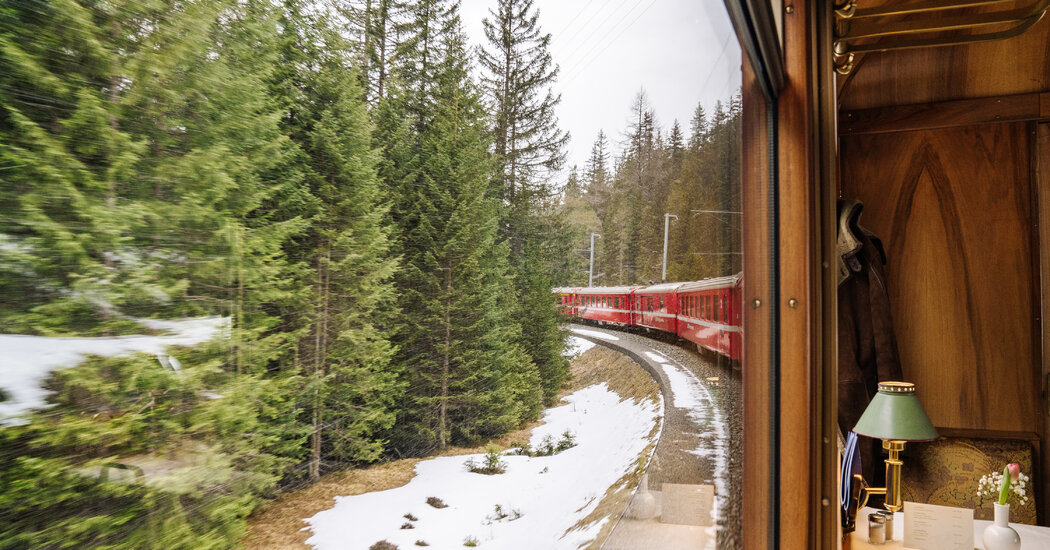It was a familiar sound in any decent Central European restaurant: the reassuring whack-whack-whack of a chef flattening the schnitzel I’d ordered from the waiter a minute earlier. The crisp white tablecloth in front of me shined bright white, and the banquette seating offered the same minimalist design as some of the region’s trendiest spots. But one aspect was different from my other recent fine-dining experiences: In the panoramic window facing my table, an Old World landscape was flying by at over 90 miles an hour.
I was in the dining car of a train, halfway from my home in Prague to an event in Budapest. Despite the great service and cool décor, the meal was wildly better than I had any right to expect: a crisp, improbably thin, fried chicken fillet, tender on the inside, accompanied by the Platonic ideal of potato croquettes and a craft beer that had been custom-brewed for the train. It was not just good. It was spectacular.
Much like the renaissance of night trains, dining cars are blossoming in Europe. Instead of the tired fare of previous eras, many now offer seasonal menus that highlight regional recipes and local producers. On some trains, the standards are quite high, though prices are generally affordable, with main courses often starting around 12 euros, or about $13.
The public has caught on. On social media, fans share photos of their favorite onboard meals. Connoisseurs argue over which railways have the best menus, rooting for Polskie Koleje Państwowe (PKP) in Poland, Deutsche Bahn in Germany or Czech Railways, where I’d had my schnitzel epiphany. It is completely unlike the situation in the United States, where Amtrak killed off most dining cars on train routes east of the Mississippi River in 2019.
To learn more, I reached out to David Ecker, who runs the @_DiningCar Twitter account from his home in Vienna. The food on European trains seems to be flourishing in Central and Eastern Europe, he said, while dining cars have become a rarity in much of Western Europe.
“I think in Central and Eastern Europe, you get the best experience,” he said. “But of course, if you’re looking for the highlights, then you have to go to Switzerland.”
With a few tips from Mr. Ecker, I planned a trip that would allow me to sample a handful of dining cars, routing my journey through Vienna, since much of the renaissance in European train travel seems to be driven by Austria’s national railway, ÖBB. From Prague, I would retry the Czech…
Click Here to Read the Full Original Article at NYT > Travel…
